- The Rasmussen University Ocala campus is located west of I-75 next to the West Marion Community Hospital in one of the fastest-growing areas of the country. Ocala is well known for its affordable lifestyle, diverse activities, and strong business climate, and our campus is conveniently located on the edge of all the action. Plus, we're just an hour's drive from Orlando. Our Ocala campus offers traditional on campus as well as online Bachelor's and Associate's degrees. Students of all ages and all degree levels can be found at the Ocala college campus studying in degree areas that have large projected growth. With these in-demand degree programs and our noteworthy career placement assistance services, our Ocala campus has grown significantly in recent years. Whether you are pursuing an Associate's degree or a Bachelor's degree, our Ocala campus can help you start your path to a successful career in such areas as accounting, network administration, Internet marketing, medical assisting, and health information technology.
School Highlights
Rasmussen University-Florida served 11,932 students (43% of students were full-time).
The college's student:teacher ratio of 18:1 was lower than the state community college average of 20:1.
Minority enrollment was 62% of the student body (majority Black), which was less than the state average of 67%.
School Overview
Rasmussen University-Florida
(FL) Community College Avg.
Carnegie Classification
Baccalaureate Colleges: Diverse Fields
Not applicable, not in Carnegie universe (not accredited or nondegree-granting)
Institution Level
Four or more years
At least 2 but less than 4 years
Institution Control
Private for-profit
Private not-for-profit
Total Faculty
677 staff
139 staff
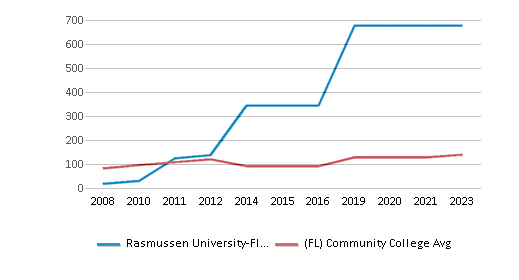
Student Body
Total Enrollment
11,932 students
646 students
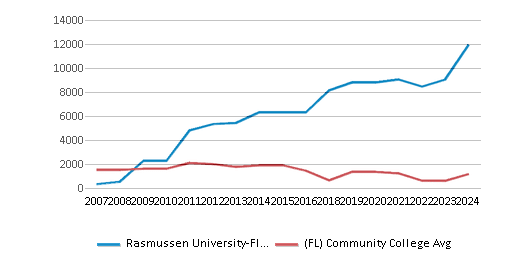
Student : Teacher Ratio
18:1
20:1
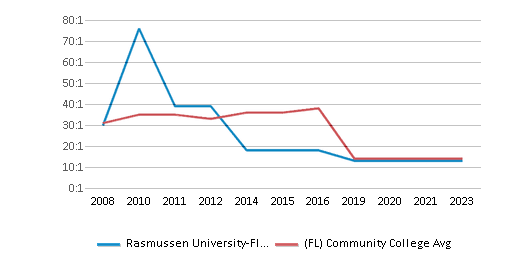
# Full-Time Students
5,183 students
587 students
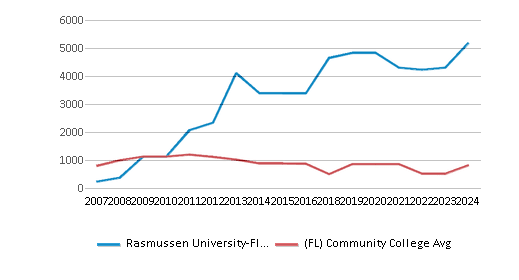
# Part-Time Students
6,749 students
557 students
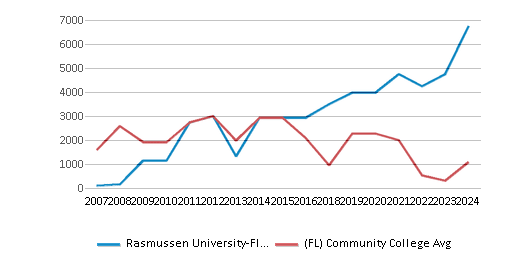
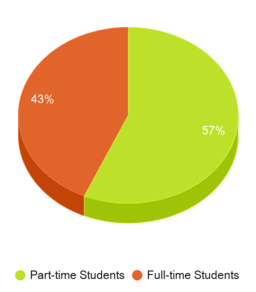
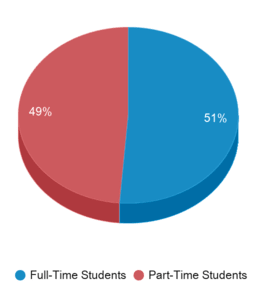
# Enrollment Undergraduate
119 students
261 students
# Full-Time Undergraduate Students
5,183 students
574 students
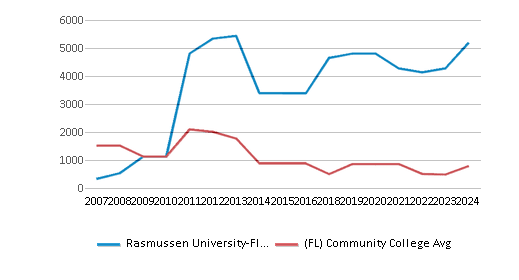
# Full-Time Graduate Students
31 students
85 students
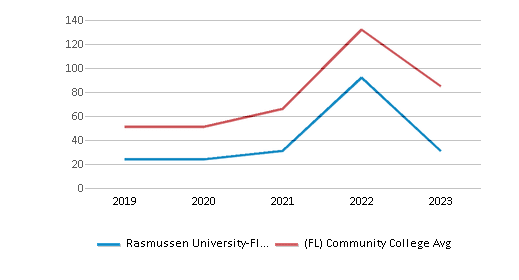
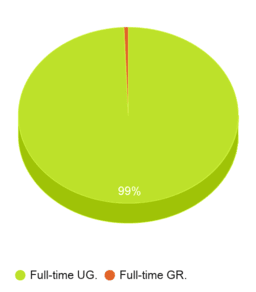
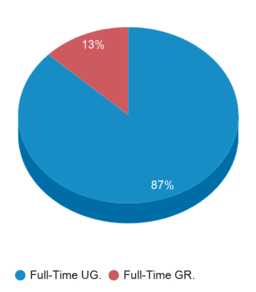
# Part-Time Undergraduate Students
6,749 students
648 students
# Part-Time Graduate Students
13 students
36 students
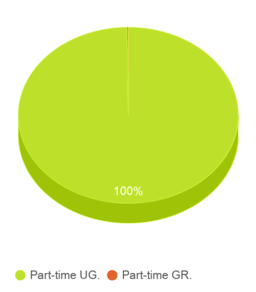
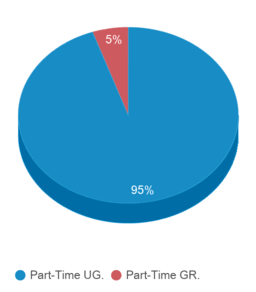
Total Dormitory Capacity
n/a
174 students
% American Indian/Alaskan
1%
n/a
% Asian
3%
5%
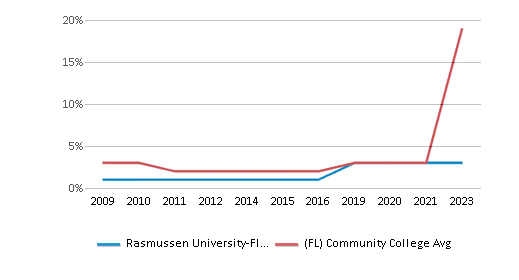
% Hispanic
17%
30%
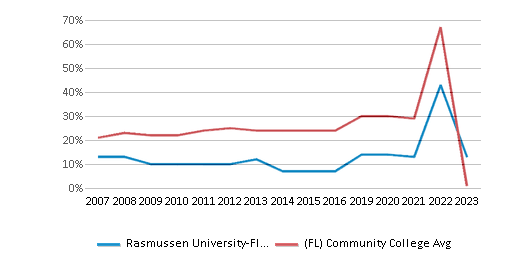
% Black
25%
19%
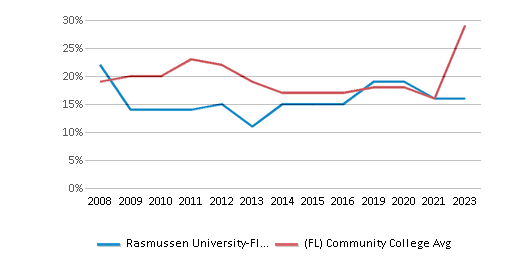
% White
38%
33%
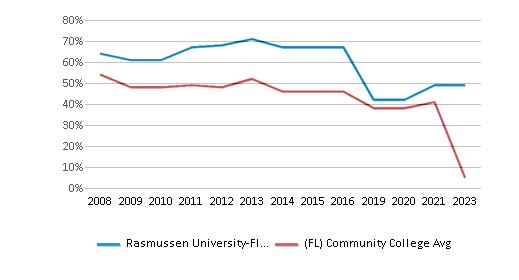
% Hawaiian
n/a
2%
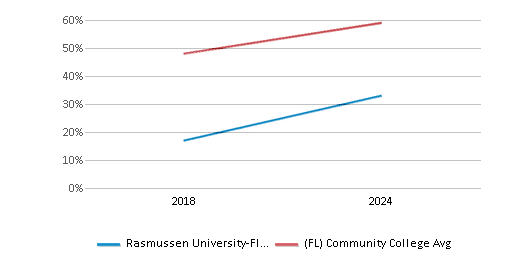
% Two or more races
3%
4%
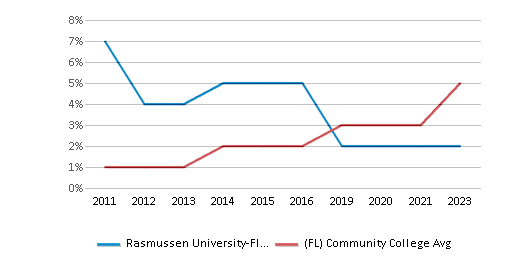
% Non Resident races
n/a
2%
% Unknown races
14%
5%
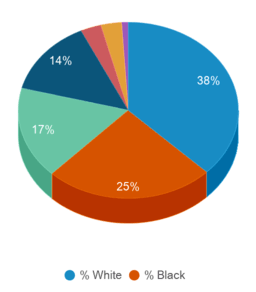
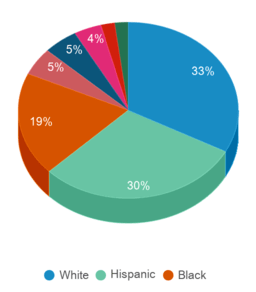
Diversity Score
0.76
0.76
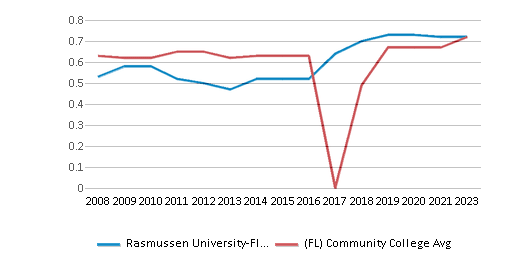
College Completion Rate (Students who graduate in less than 4 years)
n/a
0.6183%
College Completion Rate (Students who graduate in 4 years or more than 4 years)
0.4346%
0.4334%
Average Graduate Earnings (10 Years)
$33,100
$31,500
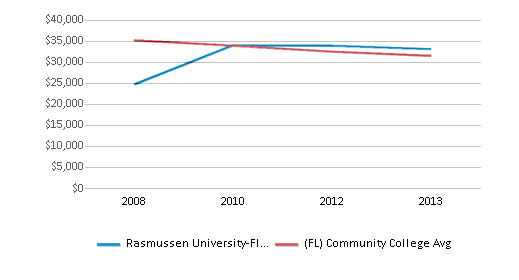
Tuition and Acceptance Rate
Private State Tuition Fees
$10,764
$16,355
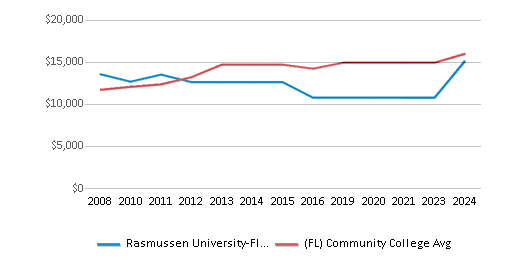
% Students Receiving Some Financial Aid
88%
88%
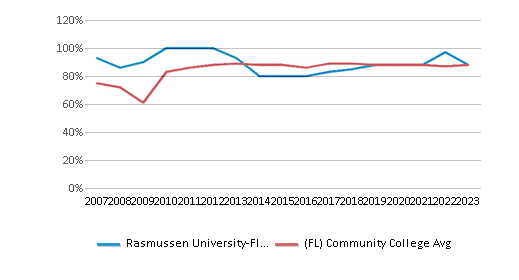
Median Debt for Graduates
$20,000
$9,750

Median Debt for Dropouts
$6,332
$5,500
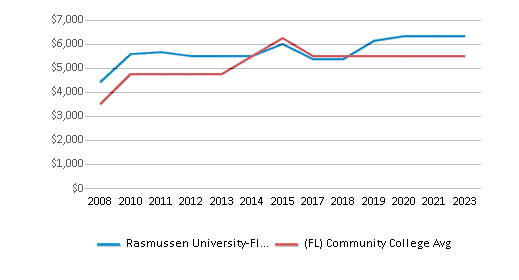
Acceptance Rate
78%
89%
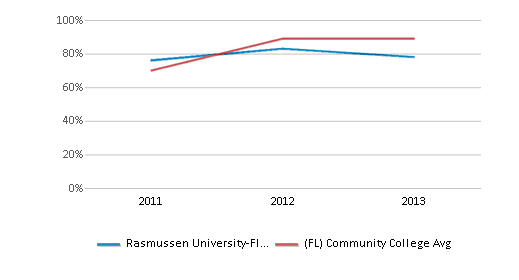
SAT Reading
n/a
442
SAT Math
n/a
429
ACT Composite
n/a
18
ACT English
n/a
18
ACT Math
n/a
18
Source: 2024 (or latest year available) Integrated Postsecondary Education Data System (IPEDS)
Frequently Asked Questions
How much does Rasmussen University-Florida cost?
Rasmussen University-Florida's private state tuition is approximately $10,764.
What is the acceptance rate of Rasmussen University-Florida?
The acceptance rate of Rasmussen University-Florida is 78%, which is lower than the state average of 89%.
Recent Articles

Obtaining Your Bachelor's Degree at a Community College
Explore the evolving landscape of community colleges offering bachelor's degrees, addressing affordability, accessibility, and workforce needs.

A to Z of Community College Certificates and Courses
From business and healthcare to technology and skilled trades, the article showcases the breadth of options available to students seeking to enhance their knowledge, develop new skills, or pursue career advancement.
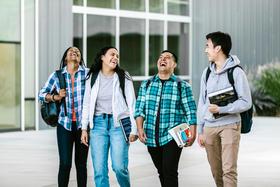
What is a Community College?
This comprehensive guide explains what a community college is, its history, and its role in higher education. It covers the types of programs offered, differences from four-year colleges, benefits of attending, and important considerations for prospective students, providing valuable insights for those exploring educational options.





